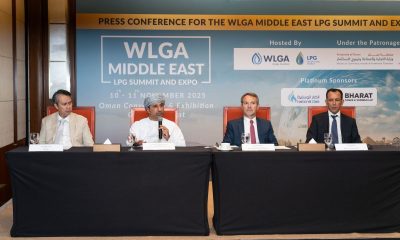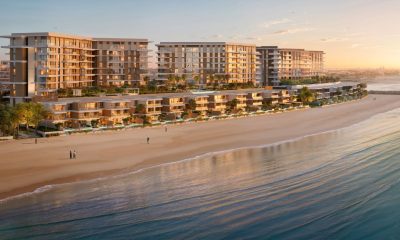Oman 2015
INCREASE IN PROJECTS
The construction industry in the Sultanate is expected to remain robust, driven by significant increase in projects as well as in the construction of real estate ventures.

 The construction industry in the Sultanate is expected to remain robust, driven by significant increase in projects as well as in the construction of real estate ventures.
The construction industry in the Sultanate is expected to remain robust, driven by significant increase in projects as well as in the construction of real estate ventures.
QUICK GLANCE
Oman has awarded more than $11 billion worth of contracts in the first eight months of 2015.
State-owned Haya Water plans to invest around RO1.25 billion in the next few years for building future sewage projects.
Oman Convention and Exhibition Centre (OCEC) will feature two tiered auditorium, and exhibition halls will feature 22,000 square meters of column-free exhibition space.
The new Muscat airport is designed to handle 12 million passengers.
Concerns are growing over whether current spending levels can be maintained into 2016 and beyond with the government under pressure to cut expenditure.
As the government is proceeding with all its major planned projects, the Sultanate’s contracting firms are unlikely to face any dearth of business. The Sultanate has awarded more than $11 billion worth of contracts in the first eight months, and is on track to beat the $14.8 billion signed awards in 2014, which itself was a record performance. Scores of major projects are under different stages of implementation and tendering. These include several prestigious projects like the multi-billion-dollar Khazzan and Makarem tight gas development, the $900million Yibal Khuff sour gas development, the $630million Salalah independent power project, and the $600million Miraah solar power plant. Also anticipated this year are awards on the first segment of the country’s prestigious National Rail project, expected to be worth in excess of $1 billion, the four multi-billion-dollar main packages on the Liwa plastics scheme, and the Barka and Sohar independent water projects, valued at about $500million each.
Several other multi-billion projects like the Oman Convention and Exhibition Centre, Haya Water projects, the W Hotel Muscat, which will come up in close proximity to the existing InterContinental Muscat, are also expected to give the much-needed fillip to the construction sector. State-owned Haya Water plans to invest around RO1.25 billion in the next few years for building future sewage projects, in line with the company’s master plan to develop a world-class wastewater facility across Muscat governorate. This investment is for building sewage pipelines, trunk lines and sewage treatment plants in six catchment areas, which include Bausher, Al Amerat, Muttrah and Seeb.
Haya Water aims at building a world-class wastewater system that connects 80 per cent of properties in Muscat governorate by 2020. The proposed investment for future projects in Seeb and Al Amerat catchment areas would be RO200 million and RO154 million, respectively. Haya Water, which was formed in 2002, will be developing pipelines, sewage treatment plants and other facilities in different packages and these contracts offer ample business opportunities for contracting firms, both local and international. Several multi-million-rial projects are under implementation in six catchment areas. For instance, the company is developing projects worth RO122 million in Bausher, RO404 million worth projects in Seeb, RO100 million worth projects in Al Amerat, RO80 million projects in Greater Muttrah and RO1 million worth project in Quriyyat. Another multi-billion project, which is under development, is Oman Convention and Exhibition Centre (OCEC). The second package contract, which included construction of exhibition halls, car park facilities and other facilities, was awarded to Carillion Alawi in 2013 for a value of RO78 million.
Also, the contract for five-star JW Marriot hotel planned at OCEC has been awarded to Bahwan Contracting Company. Also, in December 2014, Larsen & Toubro Oman was awarded the construction order for the four-star Crowne Plaza hotel which will come up at OCEC.
OCEC will feature two tiered auditorium to seat 3,200 and 450 people, while the exhibition halls will feature 22,000 square meters of column-free exhibition space. The centre will also include an additional 13 meeting rooms, two well-appointed ballrooms to seat up to 2,360, 10 hospitality suites, VIP pavilion, a spacious foodcourt and a multi-storey car park with capacity for 4,000 vehicles.
In fact, the Sultanate has traditionally been a small market by regional standards, with about $8 billion worth of contracts awarded per year. However, the past one-and-a-half years have seen a steep change in activity in the Sultanate as the government looks to proceed with a number of key projects such as the Muscat and Salalah airports, three regional airports, development and expansion of seaports, modernisation of the Sohar refinery, major expressway projects and the planned railway network.
Airport development is another focused area for Oman government in its efforts to attract tourists from across the world. A complete redevelopment Salalah international airport is nearing completion, while Muscat International Airport expansion is also in an advanced stage.
The new Muscat airport is designed to handle 12 million passengers, which can be easily scaled up to 24 million, 36 million, and even 48 million in different phases, depending on the growth in passengers. The Muscat airport will have two parallel runways, 96 check-in counters, 29 passenger boarding bridges, 30 aircraft remote stands, a baggage processing capacity of 5,500 bags per hour, and a hotel with 90 rooms. Similarly, Salalah airport has seen significant growth in passenger traffic over the past decade, to around 700,000 in 2013. With a new terminal and air traffic control facilities, the airport will be well-equipped to service the needs of a new wave of international tourists and business travelers.
However, in light of the oil price slump, concerns are growing over whether current spending levels can be maintained into 2016 and beyond with the government under pressure to cut expenditure.
According to a study conducted by Alpen Capital, the UAE accounted for the maximum value of construction projects in 2014 in the GCC, followed by Saudi Arabia. The report said that construction activity in Oman’s residential housing sector is driven by factors such as rapid urbanisation, rising disposable incomes, a fast growing middle class, ease of availability of housing loans, and low interest rates. Further, the key growth drivers in Oman’s construction industry are population growth, economic growth and increased focus on the tourism sector. The ongoing efforts to reduce the dependency on hydrocarbons across the GCC have resulted in an increase of capital investment in the construction industry.
The GCC construction industry foresees growth from 2015-2018, encouraged by factors such as favourable macroeconomics, positive demographics, and rising tourism activity. Higher budget allocation towards construction, as part of the strategic vision of nations, lends an added push to the industry.
The report, however, noted that the dip in oil prices may push Gulf nations to restrict state spending, hampering the growth of the construction industry, which is materially dependent on government spending. The opportunities available in the construction industry could be affected by lower investments from the private sector and plunging disposable income levels.
REAL ESTATE DEVELOPMENT
Oman’s real estate activities have surged ahead by 45.9 per cent to RO2.2 billion in the first half of 2015, over the same period last year, according to the National Centre for Statistics and Information (NCSI).However, the number of sale contracts witnessed a 4.8 per cent decline to 42,261 compared to 44,395 for the same period of 2014. The traded value of mortgage contracts logged a 10.2 per cent growth to reach 11,585, compared to 10,514 recorded till the end of June, 2014.
The statistics also revealed that 126,828 title deeds were issued by the end of last June, a 5.8 per cent increase, compared to the same period of 2014, when 119,849 title deeds were issued.
Similarly, real estate transactions in 2014 shot up by 27 per cent to over RO2.9 billion, from RO2.3 billion witnessed in 2013. In fact, the real estate sector accounted for 10 per cent of the country’s gross domestic product (GDP) last year, contributing RO1.3 billion, against merely RO0.9 billion in 2009.
The country’s residential development can be broadly divided into two categories – affordable houses for middle income group and premium houses for the high net worth category. As real estate market is developing over the years, Oman government started taking several important measures to bring in effective regulation, which will help promote stability in the market and avoid speculation.
An important measure in this direction last year was the introduction of a comprehensive index called the Muscat Real Estate Index, a major initiative which give a clear indication on price movement. A unique initiative, the Muscat Real Estate Index was jointly developed by the Ministry of Housing, National Centre for Statistics and Information (NCSI) and the Oman Real Estate Association (ORA).
Since the Sultanate’s real estate industry is relatively small, the country could not attract foreign investment into the sector like its neighbour -the United Arab Emirates (UAE). Also, to a large extend, the country lacks affordable houses for the middle class. The sector needs more encouragement from the government, while a public-private partnership can help attract more foreign investment for real estate development. There is limited foreign investment in the Sultanate’s real estate sector, which is still fairly small compared to the markets in some of the neighbouring countries.
Oman Real Estate Association, the umbrella body of real estate developers, recently suggested for allocating land at affordable prices for developers to build affordable apartments like studio flats within the city limits. This will not only resolve housing problem of middle class, but also widen the market depth. Oman can learn from other countries, which have succeeded in resolving housing problems in their urban areas.
A reasonable growth rate in population, affordability, integrated tourism complexes (ITCs) and property-ownership-linked residential visa are driving demand for housing units. Demand for hotels and retail outlets are also aiding the overall development of the sector. The growth drivers in Oman’s real estate market also include the upsurge in business activities, rapid urbanisation, momentous rise in consumerism and financing options at affordable interest rates, growing number of small and medium enterprises (SMEs) and port and free zone projects.
As the demand for premium housing units has shown a growth in recent years, several real estate developers, including Saraya Bander Jissah, The Wave, Muriya and Alargan have massive development plans, mainly in the capital area. The integrated tourism complex Saraya Bandar Jissah, which already started marketing, offers exclusive homes and two five-star beachfront hotels, as well as recreational and community facilities, on a beach surrounded by the Hajjar Mountains, just east of Muscat. With villas, apartments and hotels, the development is positioned sympathetically amongst 2.2 million square metres of undulating hillsides. The project is being developed by Oman’s tourism development and investment arm, Oman Tourism Development Company (ROan), in partnership with Saraya Oman, a subsidiary of Saraya Holdings, the leading international development company.
Another major development, which is taking shape, is the $2.5 billion Omagine Project, which will transform a wide swath of the waterfront adjoining the airport into one of Muscat’s principal leisure and entertainment hubs. Covering an area of around one million square metres overlooking the Sea of Oman, the Omagine Project is proposed to be an integration of cultural, heritage, educational, entertainment and residential components. The main attraction is a theme park featuring seven pearl-shaped buildings, each approximately 60 feet in diameter, associated exhibition buildings, a boardwalk, an open air amphitheatre and stage, open space green areas, a canal and an enclosed harbour and marina area. Around 2,000 residential units will also be developed for sale as part of the development. The construction contract for the mixed-use tourism and real estate project is expected to be signed this year.
Omagine last year signed a development agreement (DA) with the Oman government with respect to the development of the Omagine Project – which is expected to take more than five years to complete.
-

 Alamaliktistaad Magazines2 months ago
Alamaliktistaad Magazines2 months agoAlam Al Iktisaad – September 2025 Edition
-

 Magazines2 months ago
Magazines2 months agoOER – September 2025 Issue
-

 News2 months ago
News2 months agoKitchenomiKs Secures Investment of US$3.2M Led by Jasoor Ventures
-

 News2 months ago
News2 months agoOman Inaugurates ‘Hadatha’ – Its All-New Cybersecurity Center
-

 Banking & Finance2 months ago
Banking & Finance2 months agoOman Arab Bank Highlights Its Ongoing Strategic Initiatives and Future Plans
-

 News2 months ago
News2 months agoIEA Expects Global Oil Market to Remain Oversupplied in 2026
-

 Energy2 months ago
Energy2 months agoWLGA Middle East LPG Summit & Expo 2025 to be held at OCEC on November 10 and 11
-

 Real Estate2 months ago
Real Estate2 months agoAl Mouj Muscat Unveils Azura Beach Residences Phase 2: A New Chapter in Waterfront Living































You must be logged in to post a comment Login